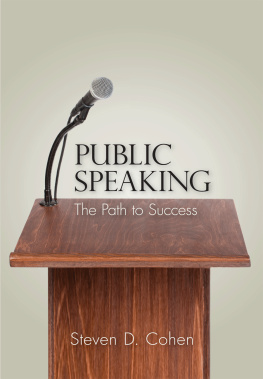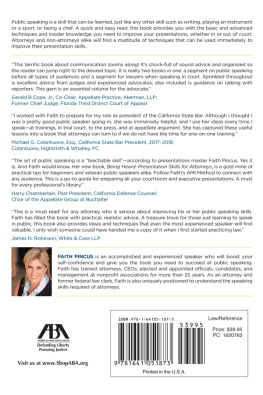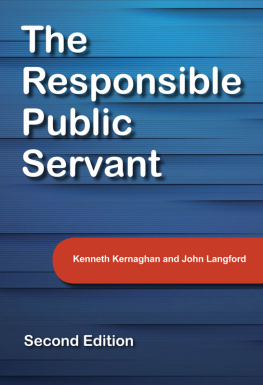The Art of Influencing Crowds
People Power
Douglas Coop
First published in 2016 by
AG Books
www.agbooks.co.uk
Digital edition converted and distributed by
Andrews UK Limited
www.andrewsuk.com
Copyright 2016 Douglas Coop
The right of Douglas Coop to be identified as the author of this work has been asserted in accordance with the Copyright, Designs and Patents Act 1998.
All rights reserved. No part of this publication may be reproduced, stored in a retrieval system, or transmitted, in any form or by any means without the prior written permission of the publisher, nor be otherwise circulated in any form of binding or cover other than that in which it is published and without a similar condition being imposed on the subsequent purchaser. Any person who does so may be liable to criminal prosecution and civil claims for damages.
The views and opinions expressed herein belong to the author and do not necessarily reflect those of AG Books or Andrews UK Limited.
You cannot make a man by standing a sheep on its hind legs,
But by standing a flock of sheep in that position
You can make a crowd of men.
Max Beerbohm
Preface
In a world of constant change, while basic principles remain the same, new situations constantly confront society, and require a fresh approach to the way crowds respond to events. People everywhere seem impatient for change, as protests and insurrections continue to flare in so many countries. Crowds soon take to the streets whenever governments fail to honour their election promises, or behave in an autocratic manner.
Revolutions in North Africa and the Middle East have changed the way we look at protests and civil disobedience. Insurrections in Syria, the Ukraine and the recent failed military coup in Turkey give further evidence of the increasing power of the people. The rise of ISIS and its acts of terrorism in peaceful neighbourhoods by groups of disenchanted migrants is a new and worrying development in first world countries. The role of the media, whistle blowers, and the ready availability of social media continue to give great power to protesters, and warn leaders that the old ways of dictatorship, nepotism and bullying of the masses must be modified. This century should prove to be very interesting as people everywhere continue to press for change.
Chapter 1
Crowds in General
A cross the centuries, history has been a continual striving for civil liberties causing rebellions and mass movements. Nowadays, hardly a day passes without the media giving details of some new protest, or continuing to follow existing insurrections. But since social attitudes change with time, modern-day crowd behaviour can best be understood by knowing how present-day attitudes have come about. Thus, old mistakes are not repeated.
The long history of society tells us people have always taken on new characteristics when they form a crowd to act out their views and concerns. When people join a crowd to draw public attention to some perceived injustice they can often be led into committing acts they would never contemplate on their own. It follows there will always be those who would exploit crowds for their own purpose. To appreciate how crowds are influenced it is necessary to look behind the events themselves to determine the underlying conditioning that shapes peoples beliefs. Thus, our current understanding of crowd behaviour overlaps many other disciplines, including the social and political sciences, psychology, philosophy and law, as well as policing and national security. Since most studies are limited to their own particular field, all these diverse viewpoints must be distilled to a comprehensive picture to advance our understanding of the way crowds behave.
The study of crowds first emerged as a subject for serious consideration towards the end of the nineteenth century. This was a time when the old ways of life were crumbling under assaults on religious and traditional institutions. People who once lived with all the certainties of dwelling at the centre of creation now realized they inhabited only a tiny planet in an infinite universe. Biology, too, reduced people to just another species. Long-standing dependence on tradition and the reassurance of divine guidance began to wane, and new attitudes undermined established moral principles and the family values of centuries.
While science undermined the hopes and dreams of traditional religion and moral beliefs in the Western World, advances in technology and industry caused more and more people to drift to the cities where they became drawn into class conflict and violence. In its turn, the legacy of pollution, global warming and other by-products of science and technology has brought science itself into question, leaving modern society with few unifying beliefs, or the stability of old traditions to fill the spiritual vacuum.
In the late nineteenth century people still believed rampaging crowds were made up of criminals and other miscreants. In those days, Scipio Sighele, a young Italian solicitor, studied crowds from a legal point of view. He concluded mob violence was due to the same factors that caused a decent law-abiding person to become a criminal through repeated bad examples, and surmised this gradual change took place rapidly in a crowd. He believed demonstrators were not hardened criminals, but simply ordinary people who underwent mental changes, the excitement inhibiting their judgment for a short time. He went on to use this defence successfully in the courts, and claimed light sentences for his clients.
In 1896, The French writer Gustave Le Bon, also one of the earliest to study and comment on crowd behaviour, described crowds as excitable, credulous, impulsive, violent, or even heroic, a state that leaves them vulnerable to suggestions from anybody capable of assuming leadership. This view has since been challenged. Until the days of world-wide media coverage, an observer had to be close to a demonstration to gain a first-hand view of the action. The simple logistics of this precluded any widespread study of crowd behaviour, and many older theories had to be based on a handful of observations. Nowadays, when global media networks bring instantaneous coverage of events into our homes, modern-day crowds can be witnessed and even studied from the comfort of the television lounge.
However, there is a problem in interpreting television pictures showing only the disorder. When the media report this from outside the crowd, accompanying comments on crowd behaviour usually rely on the viewpoint of the presenter, and may be biased. It depends upon which side is being supported since the interpretation of events is governed by a small number of media corporations along national lines. Conclusions must therefore be guarded.
Gustave Le Bon was the first to separate crowds into several broad groups, each with its own particular characteristics. Most crowds, he said, are quite unorganized. They are those found on the streets, beaches, travelling, or anywhere where individuals go about their daily activities without all being organized towards a common objective. Some sociologists claim these are not true crowds but simply the public. Still, most people are aware of the morning and evening rush hour, its traffic jams and its road rage. When similar sentiments escalate they can involve entire nations. Millions may be sacrificed in war. It is not necessary to discuss the public any further, but begin by examining crowds that gather under some form of leadership to express a particular point of view.
The first group was categorized by Le Bon as homogeneous . Each individual is a member of the same social group, for instance, professional and business associates, or people of a similar race or creed that meet from time to time. In more recent times Canetti named them Artificial Crowds since they are composed of individuals who are bound together by certain common principles in which a social hierarchy sets an example followed by those of a lower order. The chairman of a meeting or the leader of a professional group inspires members to give of their best, and the process tends to raise the general standard of the company. These groups are efficient within their own particular field, but if their members become part of a mixed crowd their behaviour may change dramatically.
Next page









